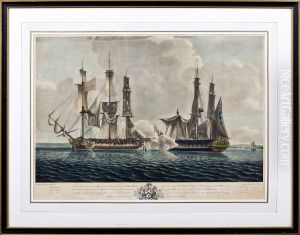John William Edy Paintings
John William Edy, also known as J.W. Edy, was a British engraver and painter active during the late 18th and early 19th centuries. Born in 1760, Edy's early life and training are not thoroughly documented, but he is known to have produced a significant body of work that includes engravings, aquatints, and paintings.
Edy's work is characterized by its fine detail and quality, particularly his prints and aquatints. He was skilled at capturing landscapes and coastal scenes, which were popular with the British public at the time. His works often depict the rugged beauty of the British countryside and its dramatic coastal areas, capturing the mood and atmosphere of these settings with a sensitive eye.
One of Edy's notable projects was a series of aquatints titled 'Boydell's Picturesque Scenery of Norway,' based on his travels through Norway in 1792. This series was published by John Boydell, a prominent London publisher, print seller, and patron of the arts, in 1800. The series showcased the sublime and dramatic landscapes of Norway, which were relatively unknown to the British public at the time and contributed to the romantic image of the Norwegian landscape.
Despite the quality of his work, Edy did not achieve the same level of fame as some of his contemporaries. His engravings, however, were well-regarded, and he collaborated with other artists of the period to contribute engravings to their publications.
Edy's later life continues to be somewhat obscure, and details about his personal life remain limited. He passed away in 1820, leaving behind a body of work that has been appreciated by collectors and connoisseurs of British printmaking and landscape art. His works continue to be of interest to those studying the development of engraving and aquatint techniques in the late 18th and early 19th centuries, as well as the romantic portrayal of natural landscapes during that period.
